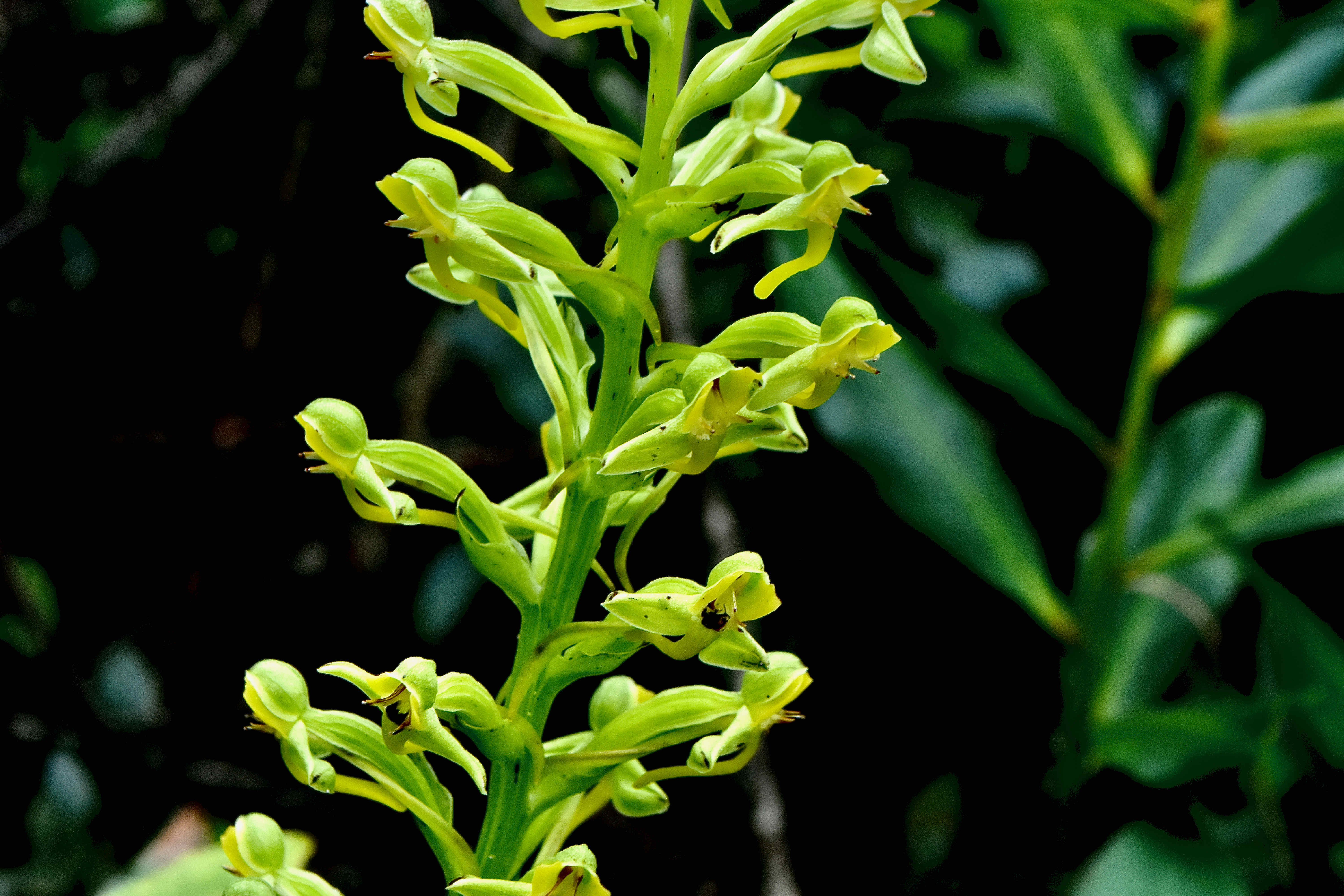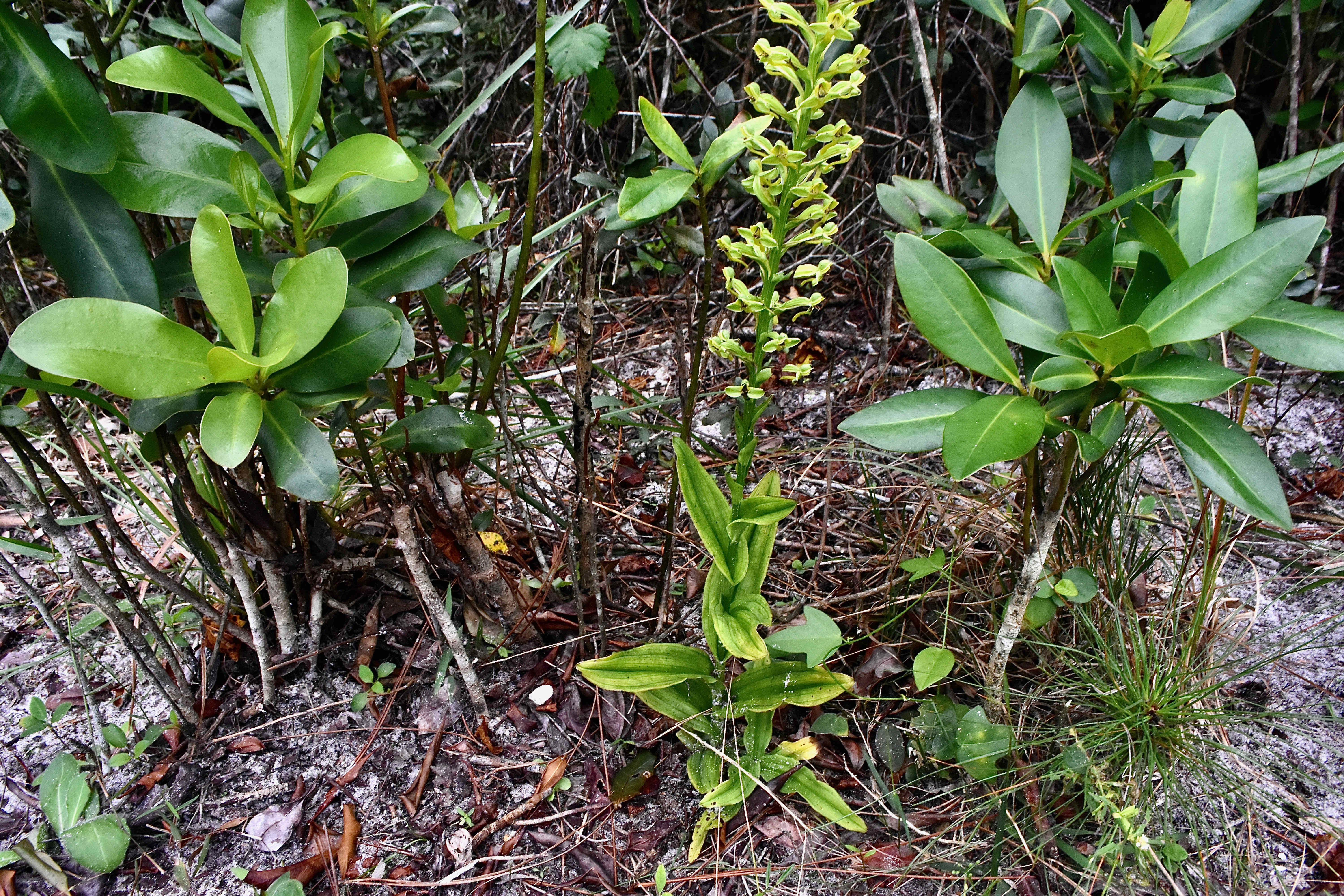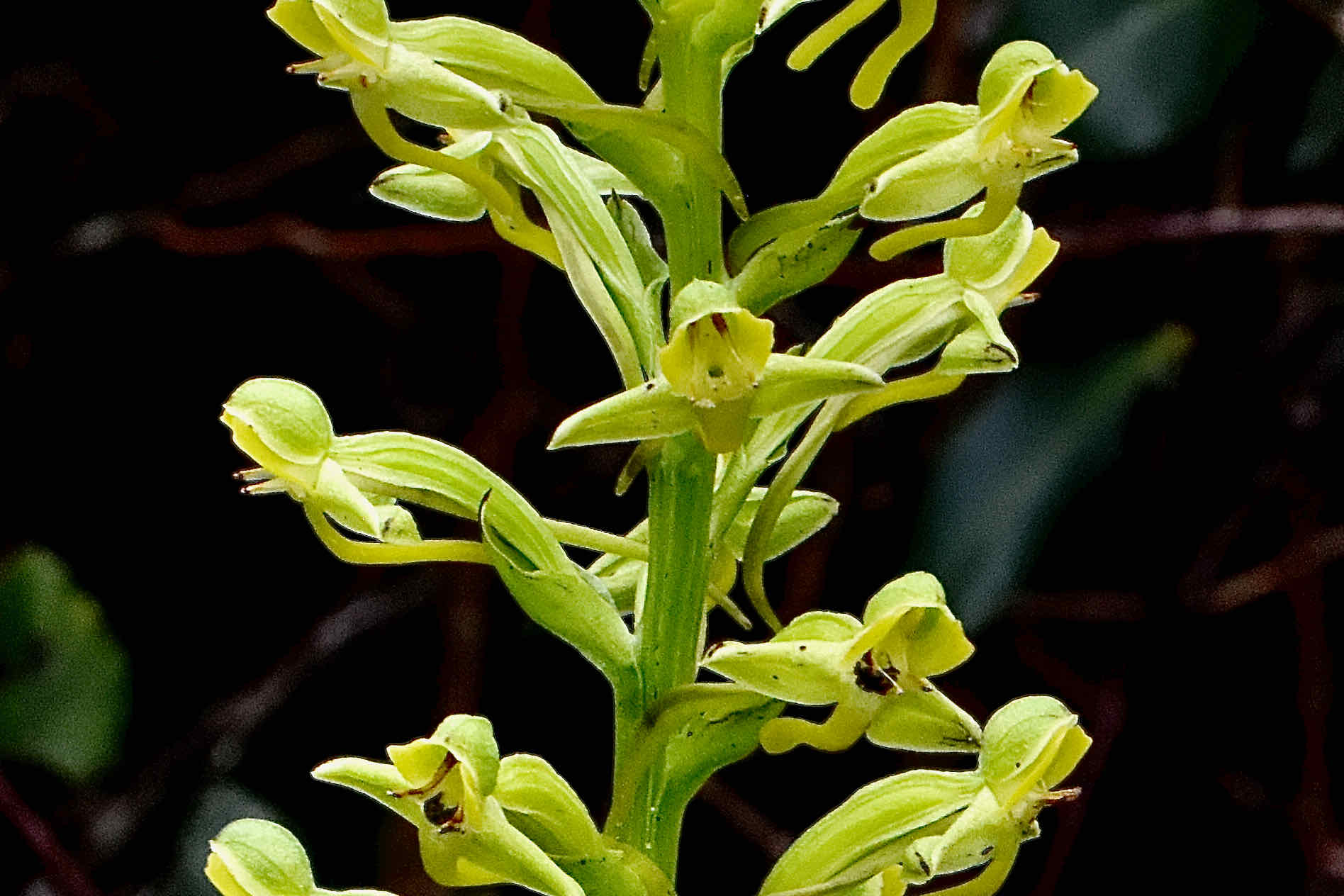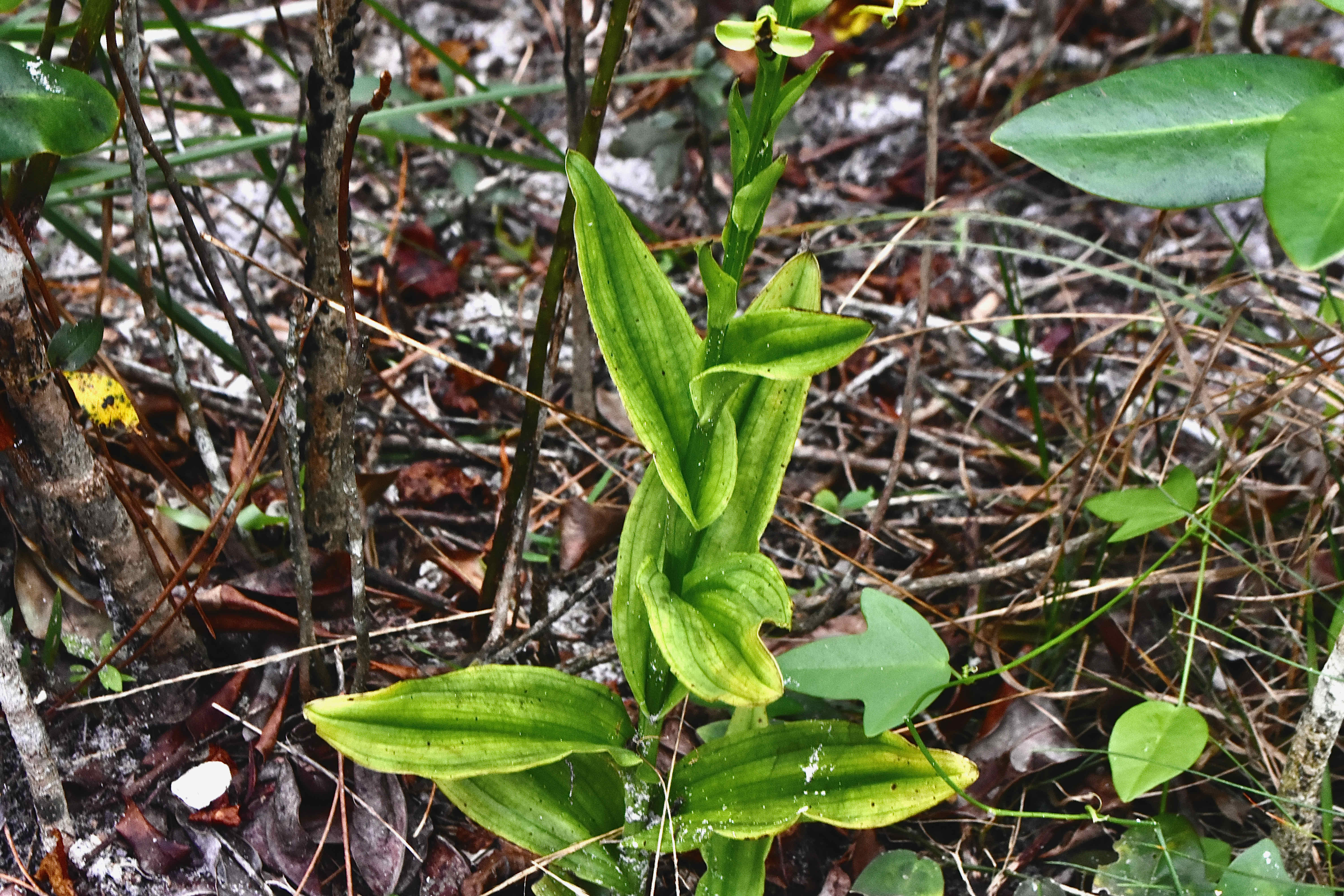
Rein orchid, photographed at Loxahatchee Slough Natural Area, Palm Beach Gardens, Palm Beach County, in December 2021.
Rein orchid has a bit of an identify crisis.
Naturalists have come up with 17 different scientific names for this plant, a reflection, in part, of its variable looks across a very large distribution range. The currently accepted name: Habenaria floribunda. But still, some major sources, including the Flora of North of America and the Lady Bird Johnson Wildflower Center, use an old name, H odontopetala. (Links to both sources are below.)
It has a reputation for putting out foul-smelling, plain-looking flowers, not exactly what comes to mind when one thinks of an orchid. But an orchid it is, and if you look at it a while, you might find rein orchid has a certain grace to it that somewhat makes up for the bland colors. It grows on you, or at least it did with us. And to be fair, some people actually find the flower to have a sweet, pleasant aroma. A matter of taste.
Rein orchid is one of the most common terrestrial orchids native to Florida, the only state in the union in which it’s found. Its natural range includes most of the Peninsula as far north Duval County, but excludes Monroe County, both mainland and the Keys. It’s also found throughout the Caribbean, including the Bahamas, Mexico, Central America and South America as far south as Paraguay.
Rein orchid grows in moist forests, swamps and thickets. It takes to places with light or moderate shade. It is cultivated and occasionally sold at nurseries that sell Florida natives.
The leaves are fleshy, typical of orchids, glossy green and arranged alternately along the stem. They are elliptical to lance-like in shape, as long as 8 inches at the base but grow progressively shorter farther up the stem.
Rein orchids do vary in appearance, which likely accounts in part for the profusion of scientific names. For one, there’s size. Several sources say rein orchid can grow as tall as three feet when in bloom. Others, including the Delray Beach-based Institute for Regional Conservation says rein orchid typically is six to nine inches tall when not in bloom, shooting up to 12 to 15 inches when it is. Which jives with what we’ve seen.
Rein orchid flowers are a quarter-inch to a half-inch in diameter, have greenish-yellow sepals — the outside part of a bloom — and greenish-yellow petals. Another variation: the flowers tend to be more yellowish in South Florida than they are elsewhere.
The flowers have a spur that is the inspiration for scientific and common name. The genus name, Habenaria, derives from the Latin word Habena, meaning whip, halter or reins. Rein orchid.
Bloom season is fall through winter. An inflorescence, or flower spike, can have as many as 60 blooms or as few as 10. They have a reputation for being rather stinky, though we must say we didn’t notice much of an odor either way when we stuck our nose in there to shoot these photos.
The IRC describes the flowers as “semi-showy,” while the Flora of North America says they’re not showy at all. They are on the plain side, especially if you compare them with what we typically think of as orchids. But their numbers and their rather elaborate structure kind of grabs your attention anyway.
According to the National Orchid Conservation Center, what critter (or critters) that pollinates rein orchids in Florida is unknown. The coloration of the flowers suggest moths of some sort are the likely guys.
One surprising fact: rein orchids are used medicinally, as are other members of Habenaria. In the Veracruz region of Mexico, rein orchid leaves are used in a drink to treat vaginal bleeding. In other parts of the world, other members of the genus are used to treat blood diseases and as a “restorative.” Not much in the way of scientific research has been on these plants, but they may have anti-oxidants that have medicinal value.
According to the IRC, there are four other members of Habenaria found growing in the wilds of South Florida: Habenaria distans, Habenaria nivea, both of which are state-listed as endangered or threatened, Habenaria quinqueseta and Habenaria repens. There are nearly 900 members of Habenaria worldwide.
Other common names: toothpetal false rein orchid, toothpetal bog orchid and mignonette orchid. Toothpetal is also spelled tooth-petal. Rein orchid is a member of Orchidaceae, the orchid family.



